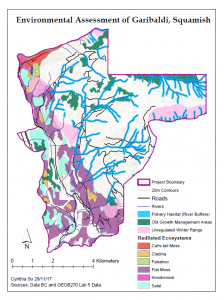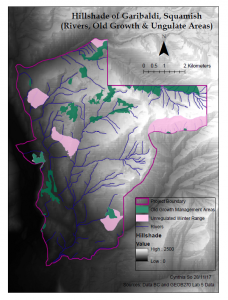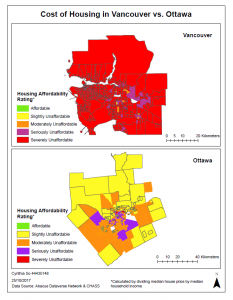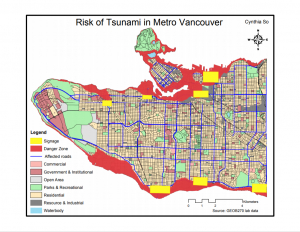

Judgement as a Natural Resource Planner
A new ski resort project has been tentatively approved in January 2016. The proposed Garibaldi at Squamish project will be located in Brohm Ridge which is along Highway 99. In response to its submission for a Project Approval Certificate under the Environmental Assessment Act in 1997, the BC Environmental Assessment Office released a report in 2010. The report requested more substantial information on the potential impacts on endangered ecosystems and wild habitat. Furthermore, the Resort Municipality of Whistler strongly opposed the project with the reason that skiing is not safe on the lower 600m of vertical due to the concerning warming effects of climate change. On behalf of the British Columbia Snowmobile Federation (BCSF), my responsibility as natural resource planner was to examine the Environmental Assessment’s recommendations and Whistler’s criticism to evaluate whether there is sufficient evidence to continue my opposition against the ski resort project.
To do so, I undertook a process of acquiring spatial data sets, such as the Ungulate Winter Range for wildlife habitats and the Old Growth Management Areas from DataBC. This was followed by a series of parsing and filtering out irrelevant data to suit the objective of this inquiry. Next, by using a variety of spatial analysis tools, I was able to calculate the area percentages of polygons in relation to the total size of the project area, use a multi-field query to select attributes of interest, and create a river buffer for riparian habitats. Last but not least, I produced a map that highlights the potential impact of the project on the surrounding environment. From the GIS analysis, results show that 31.8% of the project area is below the 600m cautionary line and that at least 60% of the project area falls within the protected areas.
Altogether, the proposed ski resort project poses a significant ecological and environmental threat to the Squamish area. Therefore, the full approval and construction of it is highly not recommended and my initial judgement to oppose it still remains unchanged. The reason being that the two greatest environmental concerns to project development is slope failure and snow avalanches. In both cases, injuries and casualties will be difficult to avoid given the fact that warmer climatological conditions will increase the risk of such large-scale events. The best way would be avoid building on unstable slopes and grounds altogether. However, in the case that the project proponents do successfully push through, then workers and machine operators must proceed with caution, evaluate the snow pack and weather regularly, and take all safety measures to minimize the risk of injuries or loss of life. The proponents should also work with engineers to stabilize slopes, as well as with geomorphologists to study the watershed and carefully redirect sources of sediment supply and water.
Personal Opinion
On a personal level, I strongly think that this project should not be allowed to continue as well. Investments should be redirected to focused on developing, renovating, and improving existing resorts. Even if the area has potential for value creation and enhancement, it does not necessarily mean that the value or benefits generated from the new resort will be captured by the local people who live in that region. Often times multinational corporations are profit driven and give limited consideration to the environment, wildlife, and quality of life of the those who rely on the land for a living. The land will have to be cleared to create an artificial pristine landscapes and torn apart to install key infrastructures. Small business owners will most likely lost some degree of autonomy because they will be preyed upon by large corporations and be pressured to conform to the standardized management system as well. In addition to these issues, climate change will exacerbate snow melting conditions, rendering it more challenging to sustain a safe and pleasurable skiing environment in the long run, while increasing the risk of the resort being abandoned and left as a ghost town. All in all, the short term advantages of a new resort do not outweigh the long term costs, so I am strongly against the continuation of this project.

